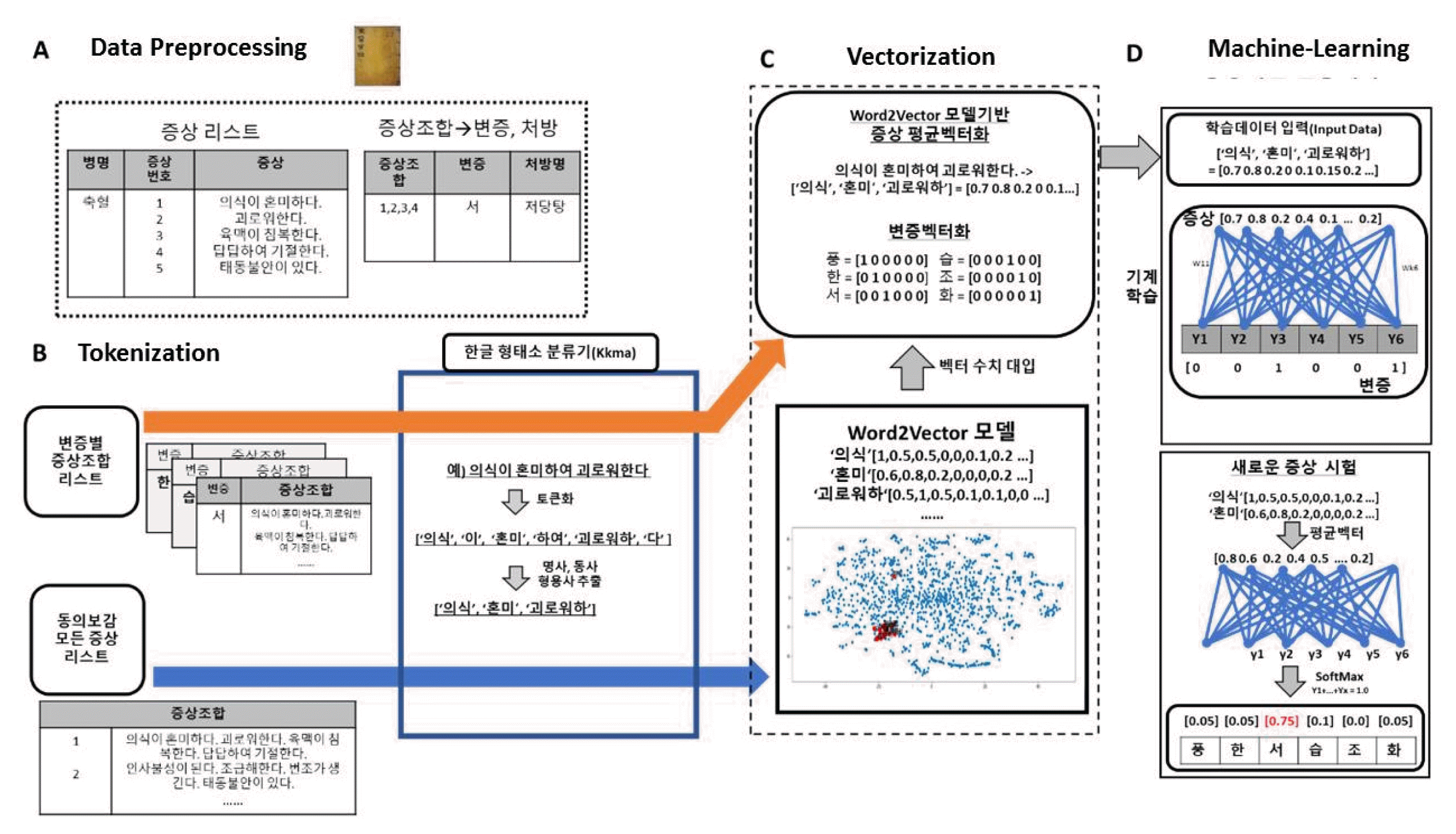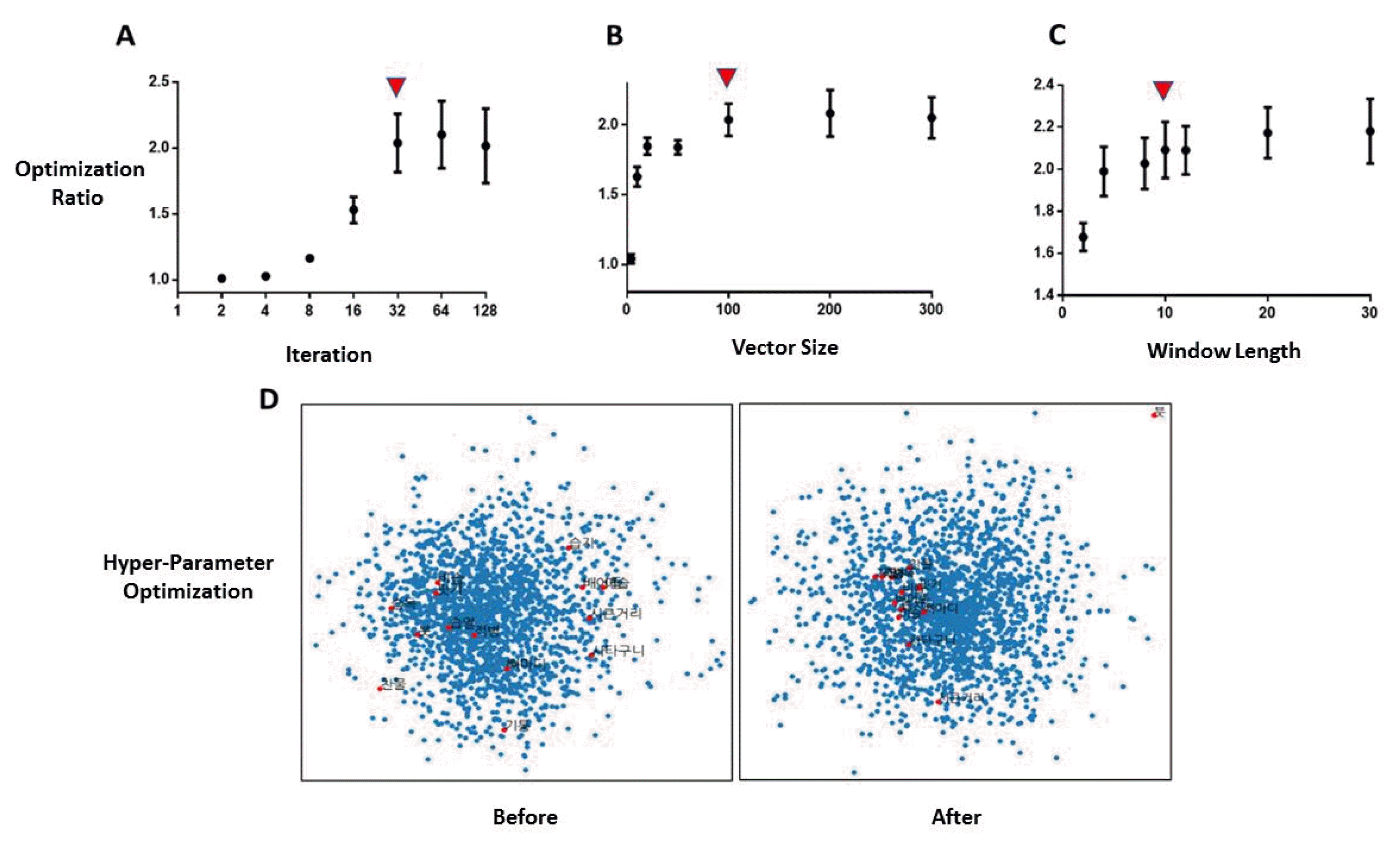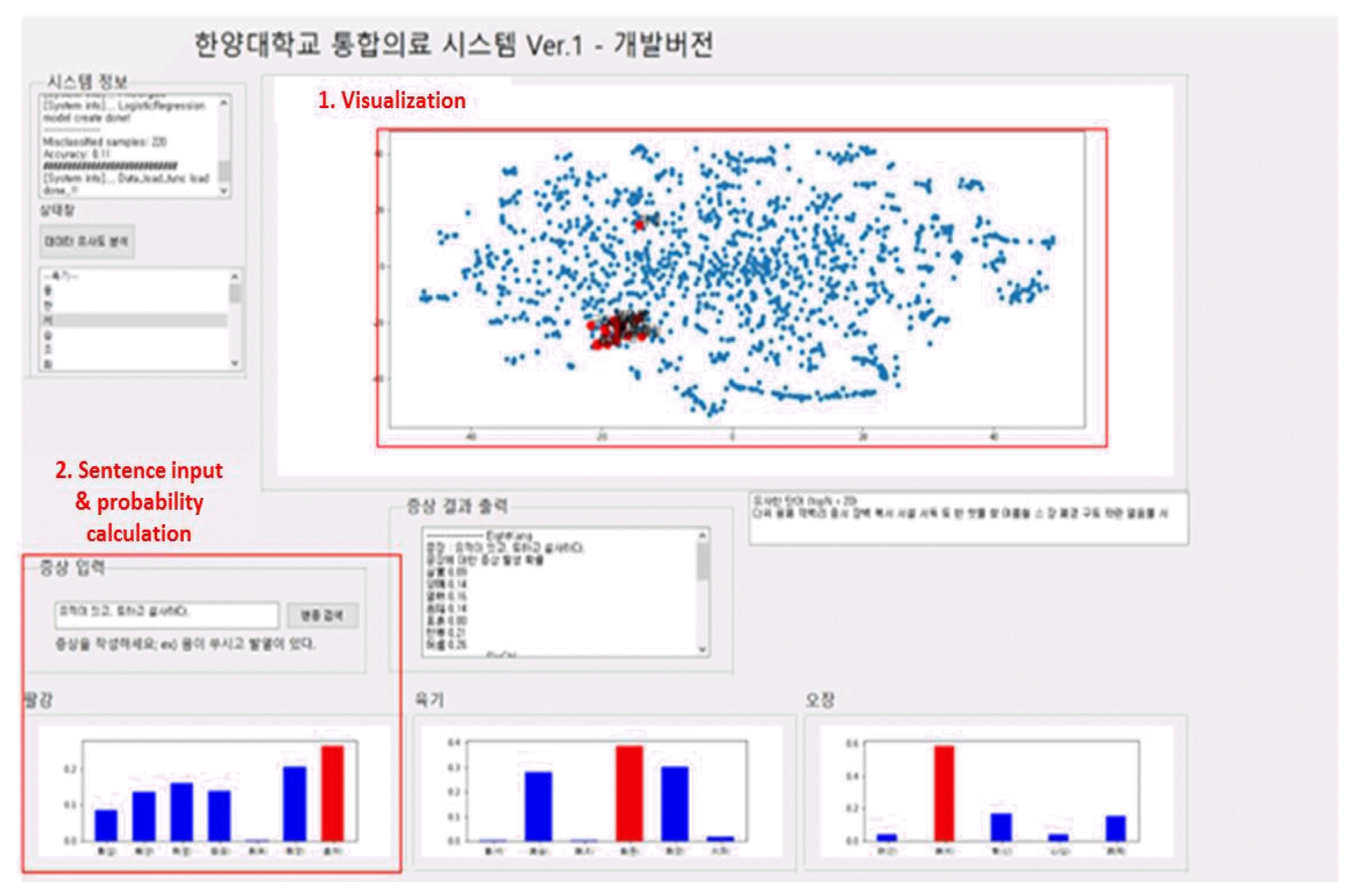Donguibogam-Based Pattern Diagnosis Using Natural Language Processing and Machine Learning
Article information
Abstract
Objectives
This paper aims to investigate the Donguibogam-based pattern diagnosis by applying natural language processing and machine learning.
Methods
A database has been constructed by gathering symptoms and pattern diagnosis from Donguibogam. The symptom sentences were tokenized with nouns, verbs, and adjectives with natural language processing tool. To apply symptom sentences into machine learning, Word2Vec model has been established for converting words into numeric vectors. Using the pair of symptom’s vector and pattern diagnosis, a pattern prediction model has been trained through Logistic Regression.
Results
The Word2Vec model’s maximum performance was obtained by optimizing Word2Vec’s primary parameters—the number of iterations, the vector’s dimensions, and window size. The obtained pattern diagnosis regression model showed 75% (chance level 16.7%) accuracy for the prediction of Six-Qi pattern diagnosis.
Conclusions
In this study, we developed pattern diagnosis prediction model based on the symptom and pattern diagnosis from Donguibogam. The prediction accuracy could be increased by the collection of data through future expansions of oriental medicine classics.



